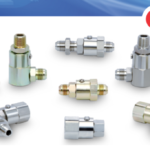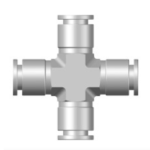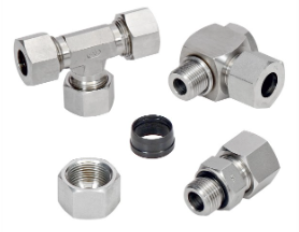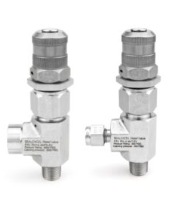
Hydraulic Hoses and Fittings: Secured Connections, Smooth Flow
May 27, 2024
Hydraulic Fittings: The Advantages of Using Quality Fittings
October 16, 2024Imagine a world of powerful machinery – construction equipment lifting tons of steel, farm tractors tilling vast fields, or factory robots assembling intricate parts. These marvels of engineering rely on a hidden hero: the hydraulic system. This network of pressurized fluids transfers power with incredible efficiency, but it all hinges on a crucial component – hydraulic fittings and connectors. Don’t get leaked! Let’s delve into the fascinating world of these unsung heroes and understand how they keep the hydraulic magic flowing smoothly.
The Power of Pressure: Understanding Hydraulic Fittings Systems
Before diving into fittings, let’s get a basic understanding of hydraulic systems. These systems use pressurized fluids, typically oil, to transmit power. Imagine pushing on a bicycle pump – the force you exert on the handle translates to pressure pushing on the fluid inside. In a hydraulic system, this pressurized fluid is routed through tubes and hoses to power pistons, cylinders, and other actuators. These actuators then translate the fluid pressure into mechanical force, allowing heavy machinery to perform incredible feats.
The Weakest Link? Why Hydraulic Fittings Matter
Hydraulic systems operate at high pressures, often exceeding thousands of pounds per square inch (PSI). This immense pressure necessitates robust components to ensure a leak-free and reliable operation. That’s where hydraulic fittings and connectors come in. These specialized components form the connection points between tubes, hoses, and other components within a hydraulic system. A loose or faulty fitting can spell disaster, leading to leaks, pressure loss, and even equipment failure.
A Fitting for Every Need: Types of Hydraulic Fittings
The world of hydraulic fittings is vast and diverse, catering to various needs within a system. Below is a summary of some typical types:
- Crimp Fittings: These permanent fittings use a crimping tool to secure a ferrule onto a hose, creating a tight seal.
- Flare Fittings: These fittings utilize a flared tube end that creates a seal against a tapered mating surface.
- O-Ring Fittings: These fittings rely on an O-ring to create a seal between the fitting and the tube or hose.
- Weld Fittings: As the name suggests, these fittings are permanently welded to tubes for maximum strength.
- Quick-Disconnect Couplings: These specialized connectors allow for fast and easy connection/disconnection of hoses without tools.
Choosing the Right Fit: Selecting Hydraulic Fittings & Connectors
Selecting the right hydraulic fittings is crucial for system integrity and performance. Here are some important things to think about:
- Pressure Rating: Choose fittings with a pressure rating exceeding the maximum operating pressure of your system.
- Material: Opt for fittings made from compatible materials that can withstand the fluid type, temperature, and environmental conditions.
- Flow Rate: Ensure the fittings have a large enough internal diameter to accommodate the required flow rate within your system.
- Connection Type: Select fittings that match the tubing or hose type used in your system.
- Application: Consider the specific application and any special requirements like vibration resistance or ease of connection/disconnection.
Beyond the Fitting: Installation & Maintenance Tips
Proper installation and maintenance of hydraulic fittings are essential for a leak-free and reliable system. Here are some important tips:
- Follow manufacturer’s instructions: Each fitting type might have specific installation procedures. Always refer to the manufacturer’s guide for proper installation.
- Cleanliness is key: Ensure all components and connection points are clean and free of contaminants before installation.
- Use the right tools: Invest in the proper tools for tightening and crimping fittings. Using the wrong tools can damage the fitting or compromise the seal.
- Regular inspections: Conduct regular inspections of your hydraulic system to identify any signs of damage or leaks on the fittings.
- Preventative maintenance: Schedule periodic maintenance to replace worn-out or damaged fittings to prevent future failures.
Conclusion: Sealing the Deal with Confidence
By understanding the importance of hydraulic fittings and connectors, selecting the right ones for your system, and following proper installation and maintenance practices, you can ensure your hydraulic system operates smoothly and efficiently. With these tips in mind, you can confidently say you’ve “sealed the deal” with your hydraulic system, allowing it to power your machinery for years to come.
Remember, hydraulic fittings might seem like a small piece of the puzzle, but they play a critical role in keeping your hydraulic system running at peak performance.




